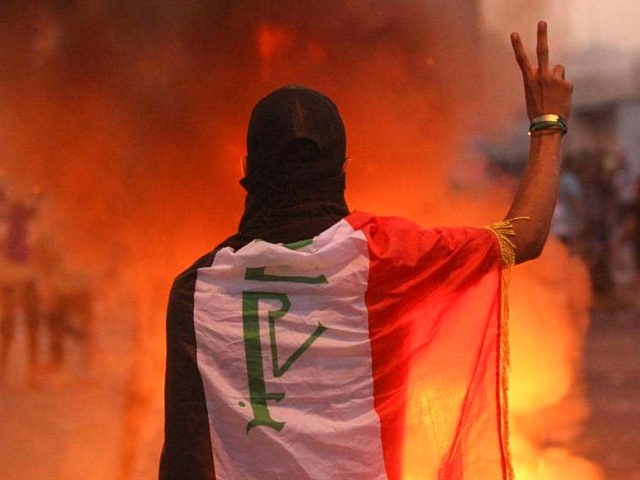Protests against government corruption in Iraq have resulted in over 100 deaths and 6,000 injuries as of Monday, local media has reported.
The protests erupted at the beginning of the month, initially as a response to the removal of Lt. Gen. Abdul-Wahab al-Saadi as counterterrorism chief. Saadi worked with American forces to fight the Islamic State, and many viewed his removal — for which Baghdad offered no explanation — as Iran expanding its influence by removing officials not loyal to Tehran.
The protests rapidly evolved into general discontent with the state of the nation, attracting even members of pro-Iran militias who say the state abandoned them after they risked their lives against the Islamic State.
“I joined Hashd al-Shaabi to save my brothers and sisters in Iraq from the brutality of ISIS terrorists,” a demonstrator identified as “Mustafa GZ” told Kurdish media network Rudaw. “Poverty and a lack of services made our lives dark and meaningless, so we went to protest against this government.”
Hashd al-Shaabi is the Arabic name for the Popular Mobilization Forces (PMF), a coalition of mostly Shiite pro-Iran militias that Iraq legalized as a formal wing of the armed forces. While many groups participated in the PMF when the militias were dedicated to eradicating the Islamic State, they have since redirected their efforts to cementing Iran’s stranglehold over Baghdad and colonizing territories under Kurdish control.
Mustafa, the protester, lamented that his decision to take to the streets and demand “basic rights” as a veteran of the ISIS war has been met with “live ammunition, tear gas, and sniper shots.”
The protesters have not issued a central list of demands, but many condemn Baghdad for a lack of social services, poverty, unemployment, nepotism, and government corruption.
They have accused Iraqi forces of opening fire into crowds indiscriminately, thus elevating the death toll. Eyewitnesses have said the men shooting into the crowds are “Iranians speaking in Farsi,” fueling the existing resentment towards Iranian officials that locals reject as invaders.
Iraq is primarily Shiite Muslim with a significant Sunni minority; its government in recent years has been Shiite controlled and maintains close ties to the Iranian dictatorship.
The Iraqi government has been scrambling to find a solution. Prime Minister Adel Abdul-Mahdi issued curfews and cut off access to the internet, and masked men in tactical gear temporarily took NRT TV, Saudi-owned Al-Arabiya, and local Al-Dijla channel off the air by force.
On Sunday, following what he described as an “exceptional Council of Ministers” meeting, Abdul-Mahdi promised a series of measures in answer. But thus far, the promises — made amid rising violence — have failed to stop the protests. Some are calling on the United Nations to “intervene to dissolve the parliament, government, and the presidency.”
Of those killed, eight are Iraq law enforcement authorities — the vast majority are civilians.

COMMENTS
Please let us know if you're having issues with commenting.